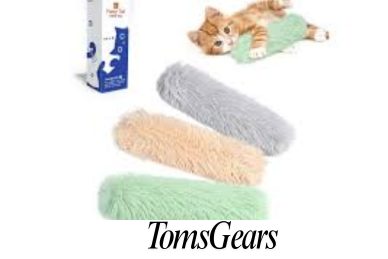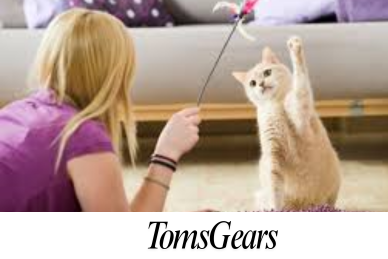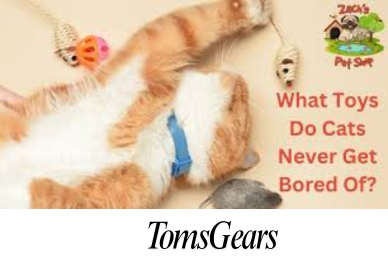Do Cats Like Squeaky Toys?
Yes, many cats are intrigued by squeaky toys, finding them exciting and engaging. These toys can stimulate your cat’s natural hunting instincts, providing both mental and physical stimulation. Understanding your cat’s preferences can help you choose the right toys to enhance their playtime experience.
What Makes Squeaky Toys Attractive to Cats?
https://tomsgears.com/supplies-care/strange-cat-behaviors/Squeaky toys mimic the sounds of prey animals, such as small rodents or birds. This realistic noise can trigger your cat’s instinctual hunting behavior, causing them to stalk, pounce, and capture the toy as if it were their prey. The noise produced by these toys often elicits curiosity and excitement in cats, making them more likely to engage in play.
Many cats enjoy toys that produce sounds, and squeaky toys offer a combination of texture, movement, and noise that can keep them entertained for extended periods. Additionally, the element of surprise when the toy squeaks can be thrilling for your feline friend, encouraging interactive play sessions.
How Can Squeaky Toys Benefit Your Cat’s Well-being?
Squeaky toys provide various benefits for your cat’s physical and emotional health:
- Physical Exercise
Engaging with squeaky toys can promote exercise, helping your cat maintain a healthy weight and avoid obesity. A playful cat may run, jump, and engage in other activities, which are essential for their overall health.
- Mental Stimulation
The interactive nature of squeaky toys encourages problem-solving and keeps your cat mentally sharp. Cats need mental challenges to prevent boredom, and squeaky toys can offer just that.
- Stress Relief
Playtime with squeaky toys can be a great way for cats to relieve stress or anxiety. The act of pouncing and capturing a toy mimics hunting, which can be a fulfilling outlet for their natural instincts.
- Bonding Opportunities
Playing with your cat using squeaky toys can strengthen the bond between you and your feline companion. Interactive play fosters trust and enhances your relationship.
Are There Any Downsides to Squeaky Toys for Cats?
While most cats enjoy squeaky toys, there are a few potential downsides to consider:
- Noise Sensitivity
Some cats may be sensitive to loud noises, including the squeaking sound. If your cat seems frightened or anxious when the toy squeaks, consider offering softer, non-squeaky alternatives.
- Durability Concerns
Depending on the quality, squeaky toys may not withstand aggressive play. Always supervise your cat during playtime to prevent ingestion of any small parts that may break off.
- Preference Variability
Not all cats will be interested in squeaky toys. Each cat has its own unique preferences, and some may prefer other types of toys, such as feather wands, balls, or laser pointers.
How Can You Choose the Right Squeaky Toys for Your Cat?
When selecting squeaky toys for your cat, consider the following factors to ensure you find the best match for their play style:
- Size and Shape: Choose toys that are appropriate for your cat’s size. Small toys can be easily manipulated, while larger toys may be better suited for bigger cats.
- Material: Opt for high-quality, non-toxic materials to ensure safety during playtime. Look for durable fabrics and robust construction to withstand rough play.
- Variety: Offer a range of squeaky toys in different shapes, sizes, and textures. Cats can be finicky, and having a variety increases the chances of finding toys that capture their interest.
- Sound Variation: Some cats may prefer toys that make different types of sounds. Experiment with various squeaky toys to see which ones resonate with your feline friend.
How Can You Encourage Your Cat to Play with Squeaky Toys?
To entice your cat to engage with squeaky toys, try the following techniques:
- Interactive Play: Use the squeaky toy during play sessions to draw your cat’s attention. Wiggle it, toss it, or roll it around to make it more appealing.
- Hide and Seek: Hide the squeaky toy and encourage your cat to find it. The element of surprise can enhance their excitement and curiosity.
- Combine with Other Toys: Incorporate squeaky toys into a collection of various toys. This variety keeps playtime fresh and encourages exploration.
- Positive Reinforcement: Reward your cat with treats or praise when they engage with the squeaky toy. This encourages further interaction and helps create positive associations.
Summary
In summary, many cats enjoy squeaky toys due to their engaging sounds and textures that mimic prey. These toys offer numerous benefits, including physical exercise, mental stimulation, and stress relief. While not every cat will be attracted to squeaky toys, the excitement they bring can provide valuable playtime experiences. By selecting high-quality squeaky toys and encouraging interactive play, you can enhance your cat’s overall well-being and enjoyment.
Frequently Asked Questions
1. Are squeaky toys safe for kittens?
Yes, squeaky toys are generally safe for kittens, but always supervise them during play to prevent choking hazards.
2. How can I clean squeaky toys?
Most squeaky toys can be spot cleaned with mild soap and water. Check the manufacturer’s instructions for specific cleaning recommendations.
3. What should I do if my cat is not interested in squeaky toys?
If your cat shows little interest in squeaky toys, consider trying other types of toys, such as feather toys or balls, to find what they enjoy most.
4. Can squeaky toys help with my cat’s anxiety?
Yes, interactive play with squeaky toys can help alleviate anxiety and stress by providing an outlet for your cat’s natural hunting instincts and engaging them in physical activity.






